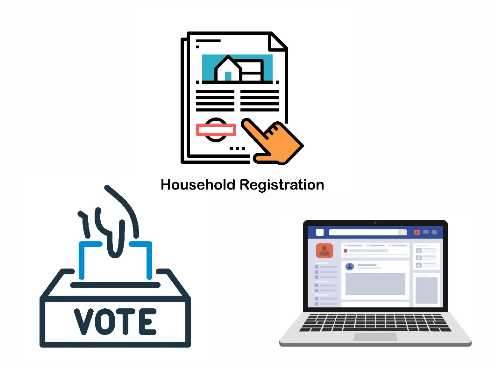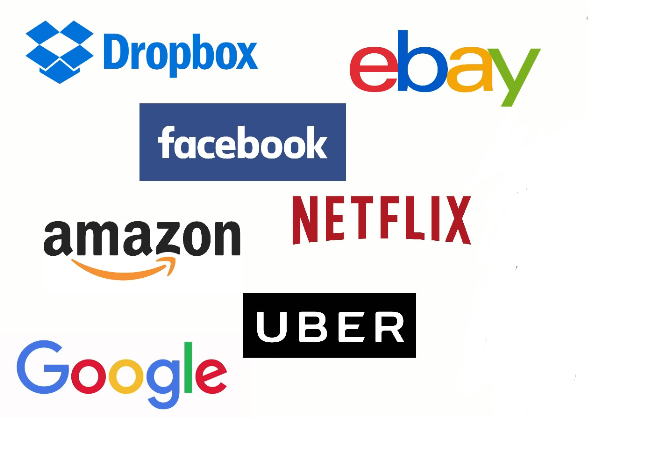Ethereum is a decentralized platform that showcases capabilities exceeding what’s possible before. Unlike Bitcoin, which was created for the sole purpose of Bitcoin transactions, Vitalik Buterin designed Ethereum also to be a platform for decentralized applications, or Dapps.
Dapps runs through Ethereum’s currency— Ether. Smart contracts are needed to run these decentralized applications.
Instead of giving Ether (ETH) a value as a “digital gold,” just like the crypto trailblazer Bitcoin, Ethereum is software that runs on a blockchain. Every user can interact within the platform through Ether (ETH), or any cryptocurrency associated with Ethereum. As a store of value, users can buy or hold Ether, just like how they buy Bitcoin.
Bitcoin to Blockchain
A learn editor at Coindesk, Ollie Leech, once mentioned that Buterin conceptualized Ethereum after realizing that Bitcoin appears to be a pocket calculator, only designed to do one thing. Although Bitcoin really does its job really well, its use is limited to it.
Soon afterward, Buterin launched Ethereum, which is a blockchain network with the big potential to do more.
Ethereum is a software platform that programmers can use to create new applications which are crypto-adjacent. These applications are designed to make using, selling, and buying cryptocurrency an easy process. These applications can be anything from payment platforms to lending applications.

Bitcoin has made it possible to decentralize money, but other centralized things would be better to be decentralized systems today. For instance, voting requires a central authority to calculate and validate votes. But wouldn’t voting be less likely to get tampered with and manipulated without someone who has the power to do so?
There’s also real estate. Real estate requires a person to go to a centralized property authority to transfer records. Social media platforms like Facebook also depend on centralized servers to control all the data users upload.
There were always central authorities that control the action of the society. But what if we use the technology behind Bitcoin, the blockchain, to decentralize such things as well?
Blockchain is a byproduct of Bitcoin, created by putting together already existing technologies like Poof of Work (PoW), decentralized network, and cryptography network architecture to build up a system without a central authority.
Blockchain technology can be rationalized this way: Blockchain is to Bitcoin, the Internet is to Email. A top technology where people can build programs and applications, with Bitcoin just one of the numerous options.
Ethereum is mostly used by developers; there are investors who take a gamble in investing in its crypto because of the enormous potential they can see on its network.
Ethereum In a Nutshell
Ethereum is comparable to a smartphone. Just like how developers can create applications on smartphones, they can rely on Ethereum as well. While smartphone applications are geared towards a universal functionality, Ethereum apps are more engaged toward cryptocurrency users. For instance, an application where crypto users can turn to borrow and lend.
Ethereum is the go-to “do it yourself platform” for decentralized software known as Dapps, which we mentioned earlier in this article.
If you desire to build a decentralized program without a single person who has the power to control it— even yourself. To begin coding, you have to do is learn Solidity, which is the Ethereum programming language.
The Ethereum platform is fully decentralized, with thousands of independent computers deployed to run it. Once a set of rules is placed to the Ethereum network, these computers (called nodes) will execute the program as written.
Ethereum has one primary goal: To completely decentralize the Internet.

Although people believe that the internet is already decentralized, giant businesses in the world wide web require an intermediary or third party like Google, Facebook, Amazon, Netflix, etc.
Once the concept of digital decentralization, which Bitcoin demonstrated, gets accepted by the masses, a whole new arrow of opportunity will become available. There will finally be an Internet that connects people without having to depend on centralized 3rd parties.
In a nutshell, Ethereum permits people to directly connect with each other without a need for a central authority. It has networks of computers that work together into a powerful decentralized supercomputer.
Smart Contracts
Ethereum plays its game through Smart Contracts.
To write a smart contract, knowledge of Ethereum’s coding language, Solidity, is required. To better understand what a smart contract is, think of what contracts are like in real life. Real-life contacts have clauses of “ifs” and “thens.” To put it simply, there is a set of rules, conditions, and actions.
For instance, if you pay rent to your landlord, then you will be able to live in his apartment. That’s precisely how smart contracts work.
The developers of Ethereum write conditions for a program or Dapp, and then the Ethereum network will carry it out. It is called a smart contract because it dispenses critical aspects of a contract, including payment, performance, management, and enforcement.
For instance, a smart contract is used in our previous example, and then the landlord wouldn’t need to always collect rental fees from you because the contract itself has a record if you really sent a payment. If you do, the apartment door will open. If you didn’t, it would remain locked.
However, although it is conventional, smart contracts still have downsides. A smart contract will lock a renter out of the apartment if he doesn’t pay instead of having the landlord kicked him out. Yet, a truly “intelligent” contract would take some factors into considerations, ad make exceptions if warranted. The contract would be most likely to act as a really good judge.
The Ethereum smart contract is not intelligent at all. It only follows a set of rules down to T and can’t take special considerations into account, like what commonly happens in real-life contracts.
After a contract is deployed on the Ethereum network, it becomes irreversible. It is immutable, so you can no longer edit or correct the program. The only way to change the smart contract was to convince the entire network, all computers participating around the world, that a “change” should be made, but it is impossible to do so.
Perfect accuracy is required while making a contract to ensure that it will do what the author intended to do with the program.
Ethereum set in motion the idea of “code is law,” and no one has the authority or power to overrule the contract.
How is Ethereum created?
Ether is produced by mining, just like the process of mining in Bitcoin. Computers worldwide solve a complex mathematical problem, and the first one to solve it gets to mine the following block of Ethereum transaction.

As a reward to Ethereum mining, a user gets awarded by the network around 2 Ether.
Ether
Now that you know that Ethereum is technically a bunch of powerful computers working to execute codes that back Dapps. Of course, this costs money. Money to acquire machines, store them, cool them if needed, and power them up.
This is why Ether was created. To position a smart contract to the Ethereum platform, the author must pay in the form of Ether. This is to write efficient and optimized code, so the computing power of Ethereum won’t get wasted on unnecessary tasks.
It only costs merely around 40 cents to buy a single Ether. Today, the value of Ether rose to hundred dollars since the growth of the Ethereum network due to the ICO hype back in 2017.
To make things clear, Ethereum is definitely not a currency. It is an infrastructure for running decentralized applications globally. And Ether is the currency used to incentivize the network.



